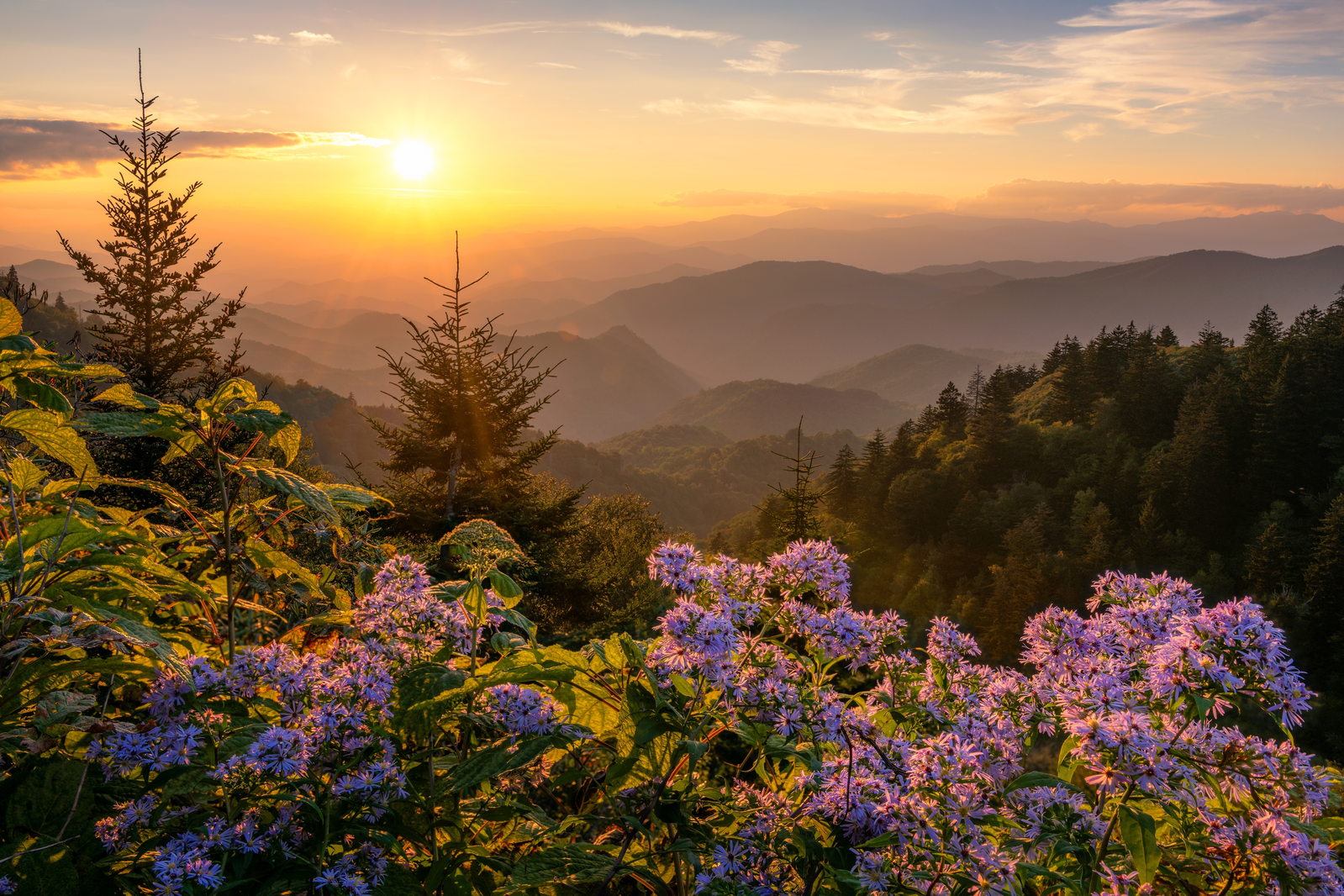The Great Smoky Mountains National Park is filled with a variety of historic cabins from a bygone age. When you visit the park, you can walk into these cabins, look around, and imagine what life must have been like over a hundred years ago. But what if you didn’t have to imagine?
In the 1940s and 1950s, visitors to the Little Greenbrier section of the park were greeted by the Walker Sisters, a group of women who looked like they walked right out of the 1800s. These sisters weren’t actresses or participants in some sort of historical reenactment, they actually lived in a log cabin in the Great Smoky Mountains National Park.
Born and raised in the Smokies, the Walker Sisters didn’t let the establishment of the national park disturb their traditional way of life. Read on for a brief look at the Walker Sisters’ unique history.

The Simple Life in Little Greenbrier
The Walker Sisters spent their entire lives in a cabin in Little Greenbrier Cove that was built by their grandfather in the 1840s. The property was obtained by their father, John Walker, when he returned to the area after fighting for the Union in the Civil War. John and his wife Margaret had eleven children: seven daughters and four sons! From oldest to youngest, the Walker Sisters were:
- Margaret
- Polly
- Martha
- Nancy
- Louisa
- Sarah Caroline
- Hettie
While all of the sons eventually left home, only one daughter, Sarah Caroline, got married and moved away. When John Walker died in 1921, the property was left to his unmarried daughters. Without any men around, the Walker Sisters assumed all of the responsibilities on the farm. For the next 40+ years, the sisters would be completely self-sufficient: raising livestock, growing vegetables, and making their own clothes.
(See Also: How Much Do You Know About the History of Log Cabins in the Smoky Mountains?)

The National Park Moves in…But the Walker Sisters Don’t Move Out
Although Nancy died in 1931, the five remaining unmarried Walker Sisters were still going strong when the Great Smoky Mountains National Park was officially dedicated in 1940. While most locals caught within the GSMNP’s boundaries moved away after the creation of the park, the Walker Sisters refused to give up their family farm. Eventually, a deal was struck in which the sisters received $4,750 for their land and permission to continue living in their cabin for the rest of their lives.
With the establishment of the national park came a host of new restrictions. The Walker Sisters weren’t allowed to hunt, fish, cut wood, or graze livestock. To make the most of their new situation, the sisters became quasi-ambassadors for the national park. When visitors came to Little Greenbrier, the Walker Sisters would say hello and sell their handmade products, such as fried apple pies, crocheted doilies, and children’s toys. Louisa even wrote poems that were available for purchase!
**The Old Ways are the Best Ways
**

While the rest of the country was buying their groceries in supermarkets, shopping in department stores, and enjoying modern appliances like vacuum cleaners and washing machines, why did the Walker Sisters insist on living like they were still in the 19th century? By all accounts, it seems like the sisters just concluded that it was the natural thing to do. The old ways were good enough for their father and grandfather, so they figured that if it ain’t broke there’s no need to fix it. The sisters put it best themselves when they said, “Our land produces everything we need except sugar, soda, coffee, and salt.”
Even though the sisters lived a seemingly austere lifestyle, they actually had a great sense of humor. In a 1946 interview with the Saturday Evening Post, the Walker Sisters revealed their dry wit. As she spun socks for her nephews who were still serving in Europe, Martha quipped, “Guess it ain’t every soldier in Germany that can say his old-maid aunts raised his socks off’n a rocky mountainside for him.” Later in the article, Margaret joked that they needed one of their male relatives to help them with their “bullheaded” mule because “a Tennessee mule has got to be handled special, and none of us can cuss.”
Polly Walker passed away in 1946, with Hettie following her the next year. When Martha died in 1951, the two remaining sisters asked the National Park Service to take down the “Visitors Welcome” sign at their cabin, because they were simply too old to do all of their chores and entertain tourists as well. Margaret died in 1962 at the age of 92, and Louisa lived in the house until she passed in 1964. Sarah Caroline, the only sister who got married and moved away, died in 1966.

See the Walker Sisters Place for Yourself
The Walker Sisters may be gone, but their historic cabin is still standing in the national park. The Walker Sisters Place is located along the Metcalf Bottoms Trail. To get to the homestead, first take the 0.7-mile hike from Metcalf Bottoms to the Little Greenbrier School, which was built by John Walker. Then, continue on the trail for 0.6 mile, where the path crosses over a footbridge. After 1.1 miles, hikers will reach the 0.2-mile side trail that leads to the Walker Sisters Place.
Update: The Walker Sisters Cabin is currently closed to visitors due to structural concerns. In 2022, the cabin will undergo renovations, including roof replacement. You can still explore the historic farmstead, including additional outbuildings while the Walker Sisters Place is closed.
To learn more about everything to see and do in the Smokies, check out our Great Smoky Mountains National Park page!

















